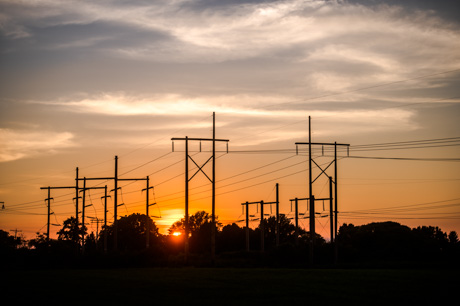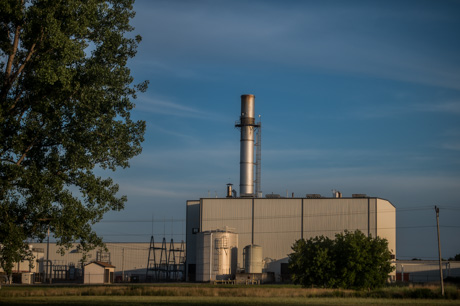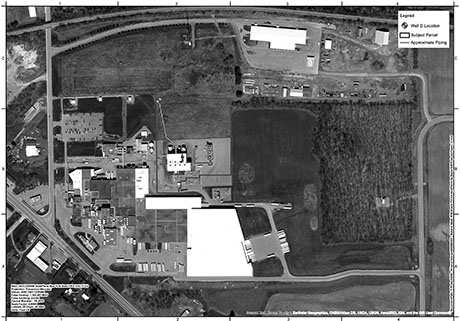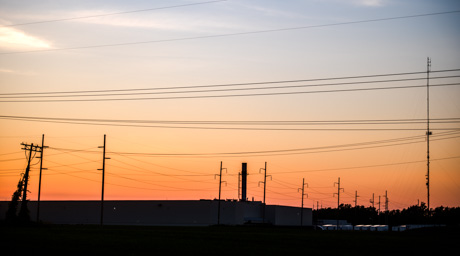
Just as the deadline for public comments was coming to a close Thursday, local municipalities were giving their reasons for opposing a request for what they believe is an excessive amount of water from City Well D.
The Department of Environmental Conservation is at the center of the request from Seneca Power Partners and opposing sides of the city and town of Batavia and Genesee County. DEC Communications spokeswoman Andrea Pedrick told The Batavian Thursday that “the public comment period ends today. DEC’s next step is to evaluate the application and any comments received to determine next steps.”
“The letter of opposition will be reviewed the same as any other public comments sent to DEC regarding this application,” Pedrick said. “It would be speculative to speak ahead of this review process.”
Seneca Power Partners surprised the municipality leaders with the permit request to draw 715,600 gallons of water per day from the city’s well for the company’s Batavia Power Plant at 163 Cedar St., Batavia. Such extraction of water daily could greatly affect the water supply for local citizens, the opposing letters stated in much more elaborated terms. (See Batavia company seeks permit for water, faces opposition)
The opposition ...
Batavia Town Supervisor Greg Post agrees with the reasons cited by city and Genesee County officials for opposing the application. In addition to letters sent by the other two municipalities, Post also sent a letter with additional ramifications if the request is granted.
One topic that has not been considered in the application or related reports is “the collateral environmental impacts,” Post said.
He has witnessed how excess demands on the aquifer downstream, primarily east and north of the city’s wellfield, he said. DeWitt Park, Seven Springs Country Club, Rochester Zen Center, Retreat at Chapin Mill, Horseshoe Lake, and Genesee County Fish and Game Protective Association (at Godfrey’s Pond) all depend on the water supply from this aquifer to maintain wetlands, ponds, lakes, and headwaters of Bigelow Creek “in the same manner consistent with the past several centuries," he said.
Post disagrees with SPP's environmental assessment that there are “no known significant individual or cumulative adverse environmental impacts” from the large withdrawal of water for Batavia Power Plant each day. Reports used as supporting documentation for SPP’s request were based mostly during low usage of the aquifer than more current times would show, Post said.
“Our concern is that any further demands on the aquifer that sustains this region’s people, industries, commerce, agriculture, and the ecological system should be looked at in more depth than the current assembled application,” Post said. “I would strongly ask that all parties demand the time to more thoroughly investigate the consequences of this permit issue.”
Genesee County is still weighing its options for how and if to respond if DEC grants the request, County Manager Matt Landers said. He wasn’t certain whether public hearings would be a future option, and the county is “handling the situation directly with DEC” right now while keeping the public informed through press releases of its correspondence with the agency, he said. To his understanding, “the permitting decision is solely in the hands of the DEC.”
“We obviously hope our letter speaks for itself to the DEC and they deny the application for the permit,” he said. “We are hopeful that an additional strain on one of the main sources of water in Genesee County is not put in place. Putting additional strain on the County’s ability to deliver safe, clean and reliable water to the residents of Genesee County is certainly not in our best interest.”
County Legislature Chairwoman Rochelle Stein said the county would like to “encourage NYS DEC to consider our comments of opposition to the request.”
“We will work in cooperation with our municipal partners as the review process evolves,” she said.
In response to The Batavian’s request for a worst-case scenario if the request is approved, Stein said that could be a “possible reduction of available raw water … for our residents and further water restriction possibilities.”
The applicant ...
In its application, a 662-page document stating its case with several supporting documents, Seneca Power Partners said that the use of water is “an integral part of the energy production process and is proportional to production.” More water is needed to produce more electricity. A simplified route the water takes looks something like this:
Water + heated by natural gas = steam = spins a turbine = goes into a generator = energy converted to electricity
The steam often evaporates and cannot be collected after the process, applicant John Trendowski, on behalf of the company, stated. Batavia Power Plant tries to minimize its water usage and repairs any leaks within the system in a timely manner. Any wastewater generated will continue to be discharged to the city of Batavia sanitary sewer, treated by the publicly owned wastewater treatment plant for eventual discharge to Tonawanda Creek, Trendowski said.
As production increases, the need for additional water will also increase as there will be more evaporative losses. The facility will track water intake from the well and the city, as well as water discharged to the city of Batavia wastewater treatment plant, he said.
“Although after-efficiency processes may reduce water usage slightly, energy production is a water-intensive process. This project was selected from evaluated alternatives because Batavia Power Plant has struggled economically in the energy market over the last several years. By using the well located on the property on Cedar Street, the Batavia Power Plant can limit its intake water from the city of Batavia,” the application states. “The generation of electricity requires significant amounts of water for cooling purposes, which is proportional to energy production. By reducing the amount of potable water required from the city, the facility can alleviate some of these expenses.”

The water withdrawal by the city to supply water to Batavia Power Plant has occurred since 1996, and based on a hydrogeologic report for Batavia wellfield, “withdrawing water directly from Well D should not have an effect on the water supply for municipalities or industrial sources in the area,” the permit application states.
The application points to major tributary watersheds that connect to Niagara River and Lake Erie, including Tonawanda Creek, which is 1,538 river miles. The creek itself is not the best source of consumable water due to its high turbidity and need for treatment, city officials said in their letter of opposition.
In the letter accompanying SPP’s permit application, Brian Gregson, development manager of Seneca Power Partners, and John Trendowski, senior principal with C&S Engineers, Inc., are the primary representatives for the request.
Not familiar with Seneca Power Partners has seemingly operated under the public radar, with no company signage to indicate it’s even there (on Cedar Street near O-AT-KA), sparse information online, and few, if any, public mentions.
The permit application is now in the hands of the DEC for a final decision.


Top photo: National Grid transmission lines near the power plant; the plant on Cedar Street in Batavia; an aerial view provided within the application; power lines running from the National Grid lines to the power plant. Photos by Howard Owens.
